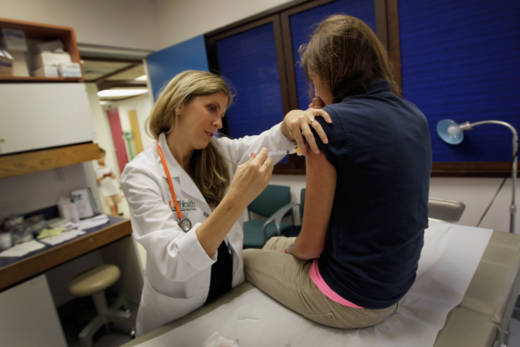The study did not examine how well these policies were implemented but simply used the mere presence or absence of such legislation as an indicator of a state’s political will to act on HPV vaccine, cancer prevention and public health, she cautioned.
According to the CDC, some 79 million Americans have HPV; it’s the most common sexually transmitted infection in the U.S., this latest study says. Another 14 million people are infected with HPV each year, the CDC says, many of them in their teens and early 20s. Cervical cancer cases almost always link back to the human papillomavirus, according to the Lancet.
The U.S. approved use of the three-dose HPV vaccine for girls in 2006 and for boys in 2011. By 2014, just a third of U.S. girls — 37 percent — and 13 percent of American boys had completed the vaccination course. By 2016, nearly half of U.S. girls were vaccinated.
Still, half of U.S. states have not implemented policies to promote the vaccine, which scientific research shows can effectively prevent cancers caused by HPV infection, according to the CDC.
These findings are not new, despite persistent attitudes that the HPV vaccine could encourage sexual promiscuity. In 2015, JAMA published a Harvard Medical School study that showed no link between the vaccineand a change in teen sexual behavior.
In 2007, Gary Freed, a pediatrician and professor at the University of Michigan, chaired the National Vaccine Advisory Council, and told Now on PBS: “If we have the ability to prevent any cancer deaths, much less a significant number of cancer deaths that affect a segment of our population that historically have not been necessarily as well served as they could have been, then I think it’s incumbent upon society to make sure that we’re able to prevent these cancers.”
Freed said this latest study reinforces the idea that teens are not deciding whether to have sex based on the threat of receiving an HPV infection. This is partly because so few people have heard of HPV, and because “adolescents think in the here and now, not 40 years from now.”
“We as a society need to decide how much we want to prevent cervical cancer for the children of today,” Freed said. “That’s really what this is all about. We can make pap smears a thing of the past.”
The U.S. is not alone in its sluggish implementation of a vaccine that can prevent illness and death as a result of cervical cancer. In 2016, a study published in the Lancet reported that out of 64 nations and 12 territories, only 47 million women finished the three-dose HPV vaccine course. Most of those women lived in high-income or upper middle income countries, the study said.
“Access to HPV vaccination in low-income and lower-middle-income countries is almost non-existent, despite these countries carrying most of the burden of cervical cancer cases worldwide,” the report said.

